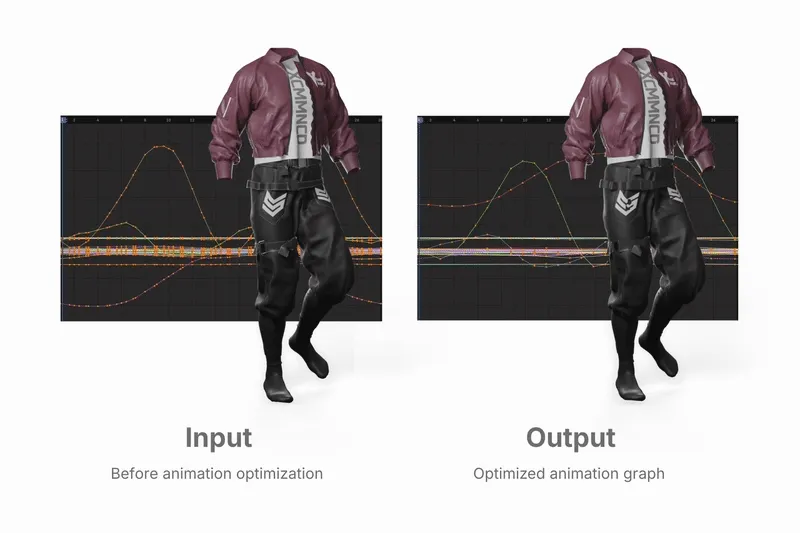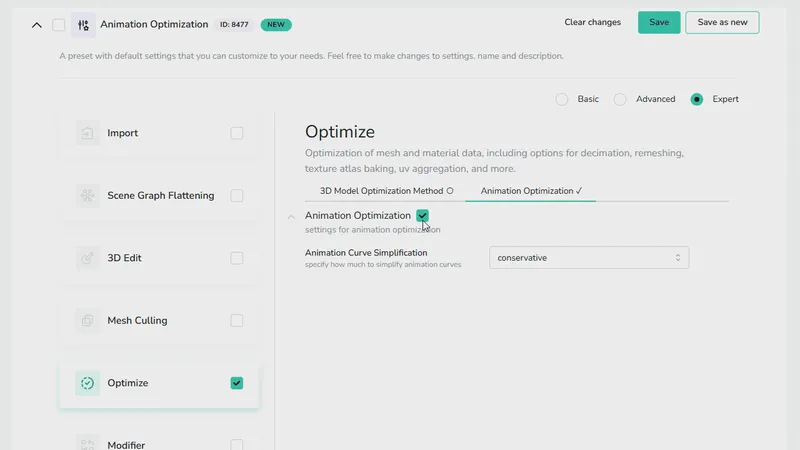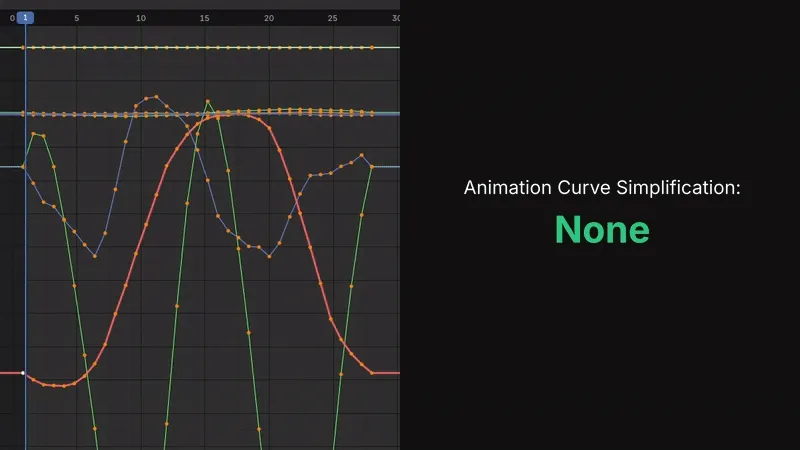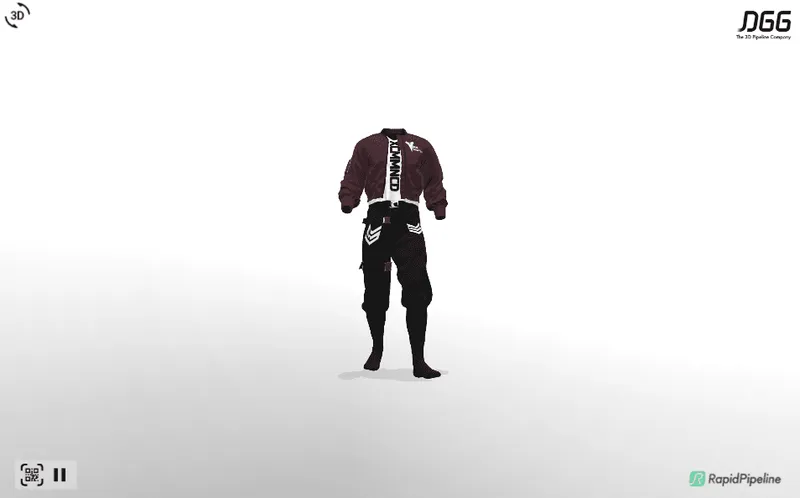
Introduction
Online visual content has changed. Over the past few years, still images have given way to video, replacing static scenes with motion. This change has also reached 3D. Animated models have proven to be more engaging and have a stronger impact on the viewer.
But anyone working with animated assets knows that realism comes at a cost: animation data can get heavy. And when preparing models for real-time use, oversized files are more than just inconvenient, they’re often unusable.
This month's spotlight feature is: Animation Optimization. A simple but powerful way to reduce animation complexity and shrink file sizes, while keeping your motion looking great.

The Model: Animated Male Outfit
For this use case, we used an animated male outfit exported from a digital fashion software. The asset included:
A complex, high-resolution mesh with a high number of nodes
A skinned walking cycle animation with dense keyframe data


Why Animation Optimization Matters
Most 3D file formats don’t store animation as rich animation curves with Bézier handles or tangents. Instead, they use simple linear interpolation between keyframes.
So when you bake out detailed animation (like cloth or procedural rigs), the result is often: Thousands of redundant keyframes, huge file sizes and no real benefit.
That's where Animation Optimization comes in.

How It Works
You can find the simplification setting under the Optimize tab: Animation Optimization.
RapidPipeline offers three levels of aggressiveness:
Conservative: Ideal for most animation data. Keeps subtle detail.
Aggressive: Reduces more keyframes. Great for background characters or mid-distance assets.
Extreme: Best for LODs or throwaway animations where size is more important than precision.
It analyzes the animation curves and removes redundant keyframes, preserving the visual motion but simplifying the underlying data. It works even with complex models as our Male Outfit, with lots of meshes and bones.

The Result
Animation Optimization is one of those features that's easy to overlook, but makes a big difference when you're prepping assets for real-time use. Whether you're publishing to WebGL, mobile apps, or VR platforms, keeping your animation data lean helps with faster loads, smoother playback, and cleaner pipelines.
If you’re working with simulation-heavy clothing, mocap rigs, or baked animation, this tool might be just what you need.
You can take a closer look at the result of our animated Male Outfit in the interactive viewer below, and try Animation Optimization for free now!

Meet the Author

Teresa
Technical 3D Artist
Teresa is a 3D Technical Artist at DGG, bringing with her a robust background in Animation and Game design. Driven by a passion for the intersection of art and technology, she relocated to Germany to pursue her artistic ambitions. Within DGG, Teresa plays a pivotal role in infusing the team with her artist's perspective, focusing on the creation of high-quality visual content and ensuring the quality assurance of tools. Her overarching goal is to continually evolve within the industry, delivering compelling visual solutions that resonate with DGG's mission of streamlining and scaling 3D content preparation.
